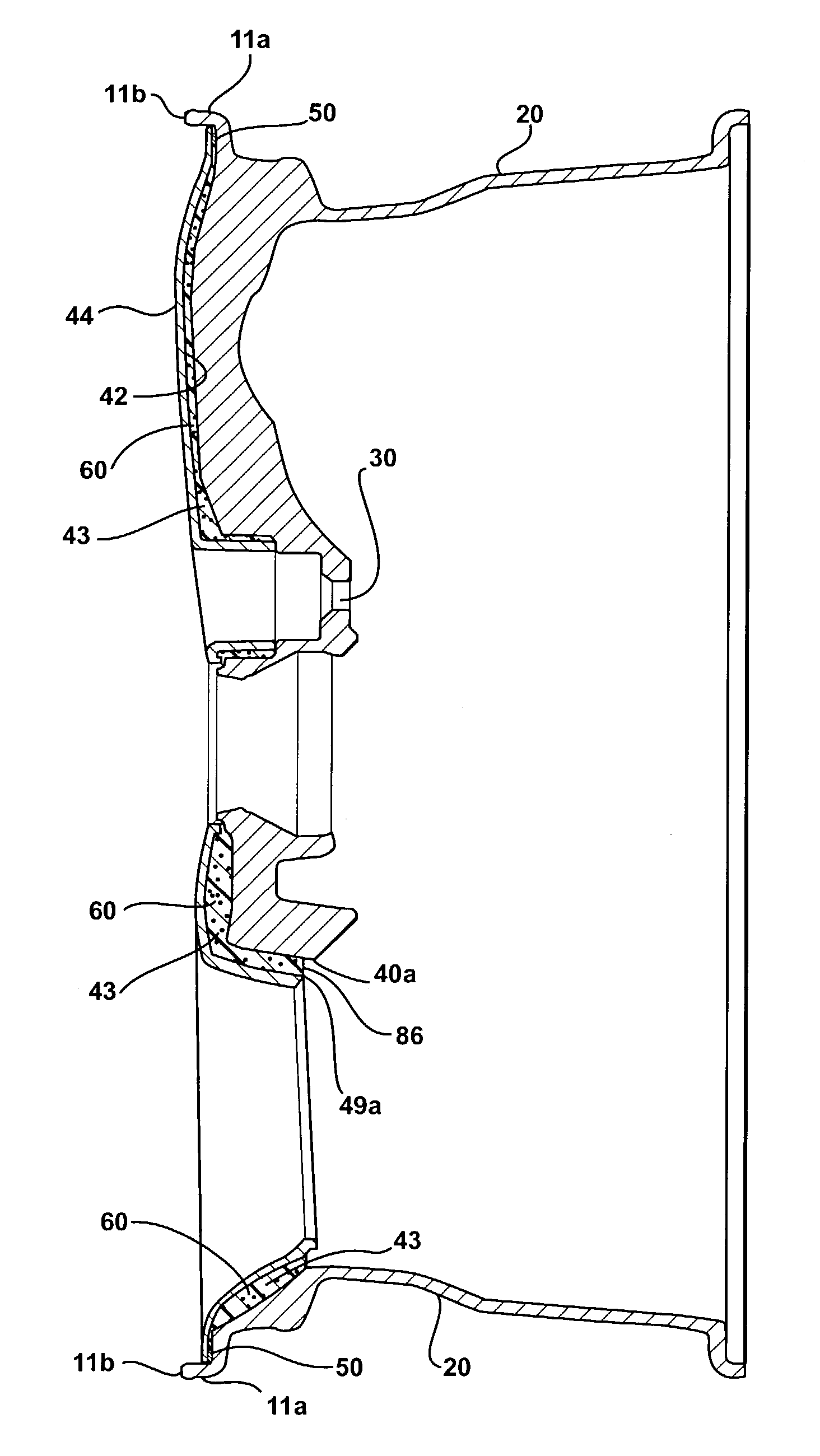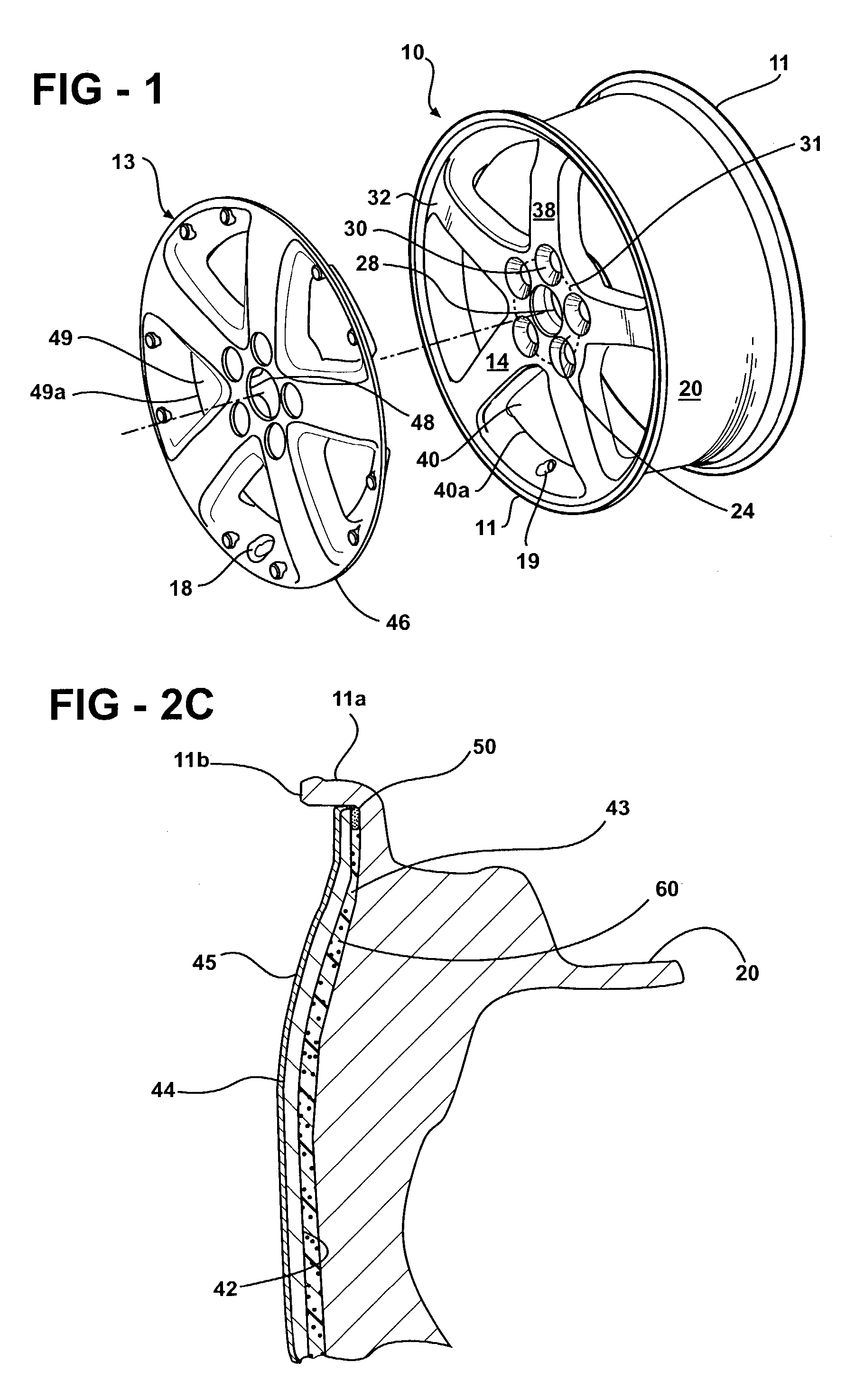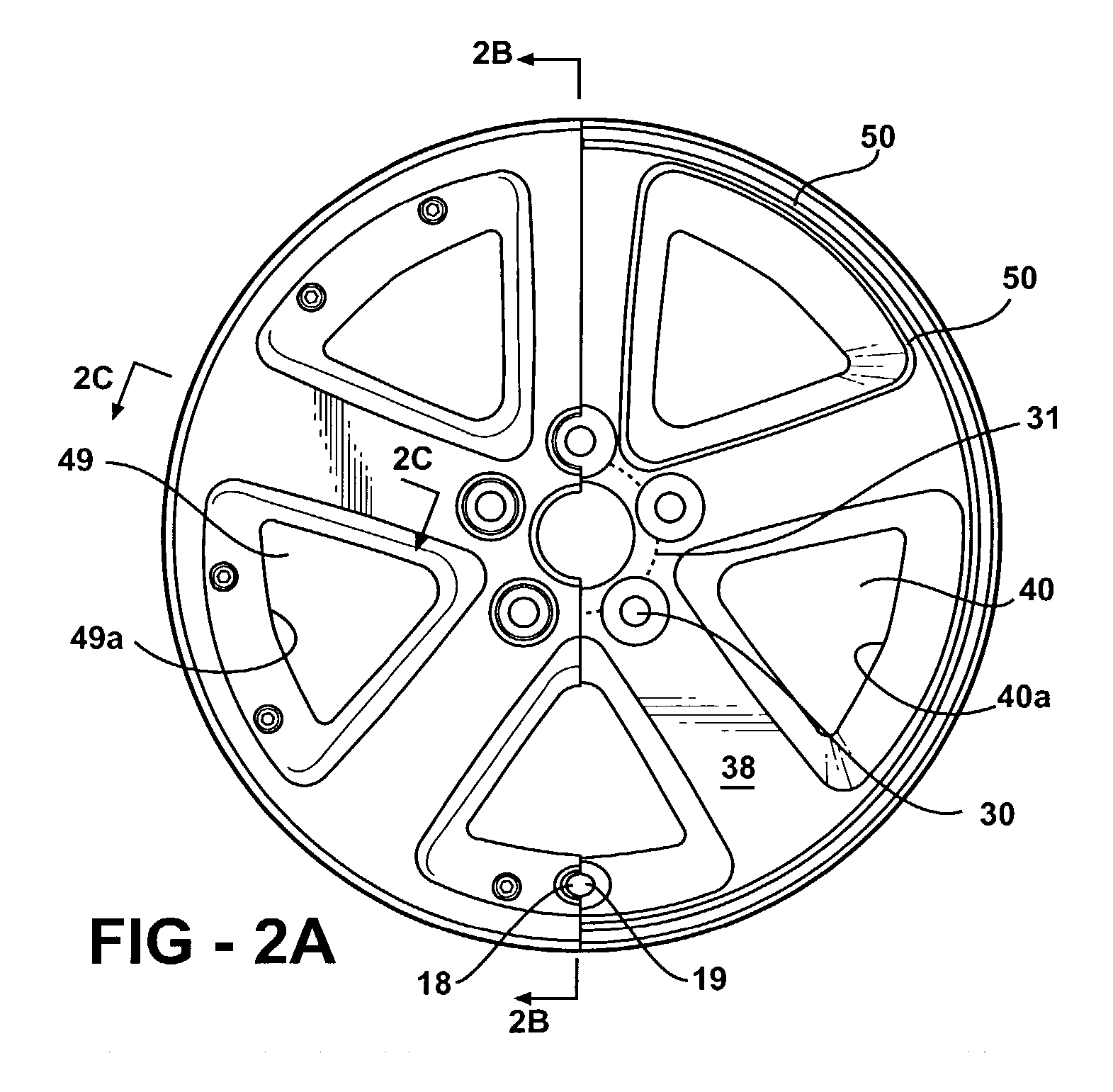Method and apparatus for assembling a vehicle wheel
a technology for vehicle wheels and components, applied in the direction of transportation and packaging, papermaking, other domestic articles, etc., can solve the problems of limiting the ability of adhesive tape to reliably adhere the overlay to the wheel, prohibiting the use of such adhesive tapes in mass production, and affecting the economic and reliable
- Summary
- Abstract
- Description
- Claims
- Application Information
AI Technical Summary
Benefits of technology
Problems solved by technology
Method used
Image
Examples
Embodiment Construction
[0045]Referring now to the drawings, there is illustrated in FIG. 1 an exploded, perspective view of an automobile wheel 10. The wheel 10 is preferably a one piece aluminum wheel having a rim portion 11 and a disc portion 14. Together the disc portion 14 and the rim portion 11 define an outboard surface 32 of the wheel 10. A wheel cover or overlay 13 is attached to the wheel 10 as will be described hereinafter.
[0046]Although this invention is discussed in conjunction with the particular wheel 10 disclosed herein, it will be appreciated that the invention may be used with other types of wheel constructions. For example, the wheel can be a “bead seat attached” wheel (such as shown in FIG. 4 of U.S. Pat. No. 5,188,429 to Heck et al.), a “full faced” wheel (such as shown in FIG. 2 of U.S. Pat. No. 5,595,423, to Heck et al.), a “bimetal” wheel construction including an aluminum disc and a steel rim (such as shown in U.S. Pat. No. 5,421,642 to Wei et al.), a “modular wheel” construction i...
PUM
| Property | Measurement | Unit |
|---|---|---|
| temperature | aaaaa | aaaaa |
| temperatures | aaaaa | aaaaa |
| pressure | aaaaa | aaaaa |
Abstract
Description
Claims
Application Information
 Login to View More
Login to View More - R&D
- Intellectual Property
- Life Sciences
- Materials
- Tech Scout
- Unparalleled Data Quality
- Higher Quality Content
- 60% Fewer Hallucinations
Browse by: Latest US Patents, China's latest patents, Technical Efficacy Thesaurus, Application Domain, Technology Topic, Popular Technical Reports.
© 2025 PatSnap. All rights reserved.Legal|Privacy policy|Modern Slavery Act Transparency Statement|Sitemap|About US| Contact US: help@patsnap.com



